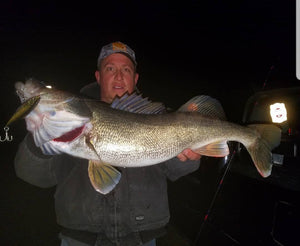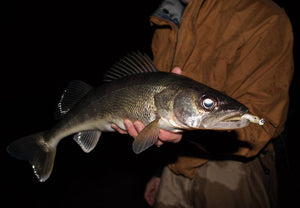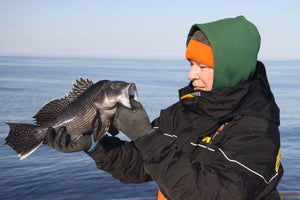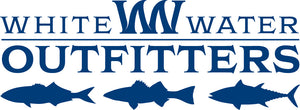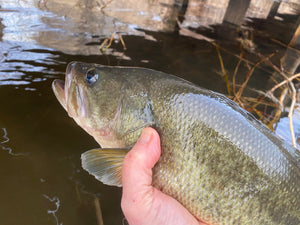Peconic Bay's Summer Mixed-Bag Action Is Perfect For Family Fun
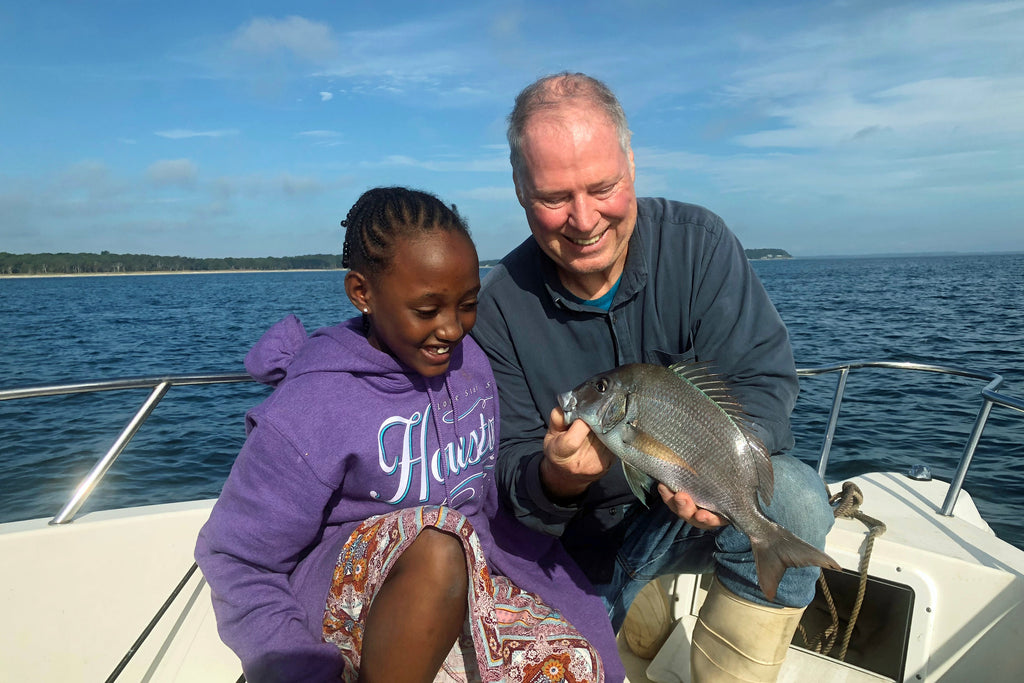
Mid-Summer shallow water mixed-bag fishing on Peconic Bay is sure to bring out the smiles. OutdoorTom.com photo.
There’s little doubt trophy hunting for cow stripers, tiderunner weakfish, gorilla blues and doormat fluke tends to take a breather on Peconic Bay during the heat of late July, August and early September. At this time of year, connecting with bragging-sized fish in this area tends to favor sharpies working deep water and select spots or fishing on the midnight shift. Still, a noticeable resurgence of summertime mixed-bag bottom fishing in recent years inside the bay had provided plenty of opportunity to bend the rod with a mix of smaller but willing species especially well-suited for family fun.
Basically, anything goes in this game and you never know what might strike next, which is a big part of what makes it so enjoyable and ideal for getting your family out on the water. Expect porgies, school weaks, sea bass, kingfish, blowfish, snappers and sea robins to make up the bulk of the catch, but figure you'll pull an occasional fluke, bluefish or larger weakfish now and then, too.
While you'll surely be tossing back most of what you catch on these summertime bay trips, the odds are you'll also bring home more than enough keepers to feed the family by the time the day is over. Even better, you can enjoy this sport in calm waters just a short ride from most local marinas and launch ramps. Since this action is available on almost any moving tidal stage - with an edge generally to the top of the flood - you can fish when you have time without the need to get up at the crack of dawn, a big plus when younger family members come along.
DON'T PASS ON THE BACK BAYS
Deep water within a short ride of your dock or launch spot is the key to finding where these mixed bag species like to school - but keep in mind that "deep" is a relative term. If you can find a 12 to 20-foot deep hole in an area where the depth is mostly uniform, you've got a great place to anchor up and get started. If not, look for depressions that provide at least eight of depth in channels that border large, shallow flats. Another good option is to position yourself roughly a 1/4-mile in front of where a major tidal creek or river empties into the bays.
 Sea robins may be a nuisance for fluke fans, but they fight hard, have big wings, bright colors, a dragon’s head and croak out loud. No wonder kids love catching them. OutdoorTom.com photo.
Sea robins may be a nuisance for fluke fans, but they fight hard, have big wings, bright colors, a dragon’s head and croak out loud. No wonder kids love catching them. OutdoorTom.com photo.
Naturally, there are a few general areas that produce interesting catches on a steady basis. Consider, for example, the southeast corner of Robins. The southwest end of the island, near Robins Rock, is another great starting point. Across the bay just outside of Cutchogue Harbor, and deep inside Southold Bay where Corey and Richmond creeks drain out into 12- to 20-foot depths, are other reliable locations. What these mixed-bag hot spots all share in common are manageable depths, reasonable currents, and tidal action that is strong enough to ensure a steady stream of food for their inhabitants while not requiring heavy weights for beginning anglers to hold bottom. For family, fun, that’s an ideal situation.
GO LIGHT, HAVE FUN
Considering the nature of these trips, it's a good idea to keep your tackle on the light side. Lightweight fluke setups and 12-pound class spinning gear are ideal for this kind of fishing because they allow your quarry to give a decent account of itself but still have backbone enough to handle the occasional 15-inch porgy, three-pound weakfish or keeper fluke that might inhale your bait. In terms of outfits, think along the lines of a relatively inexpensive ($80) Daiwa Crossfire Inshore LT spinning combo (available in-store) and you’ll be in the ballpark.
In terms of rigging, a high-low bottom setup with a pair of size #2 beak-style porgy hooks or a Jigging World Porgy Rig work well when paired with a two-ounce bank sinker. This rig will allow you to present baits right on the bottom, and a foot or two above. The porgy hooks hold smaller baits exceptionally well and they’ll stick and just about any fish you might encounter.
 You never know what’s going to steal the show on a Peconic Bay mixed-bag summer fishing trip. Three- to four-pound weakfish are never out of the question.
Photo by Felicia Scocozza.
You never know what’s going to steal the show on a Peconic Bay mixed-bag summer fishing trip. Three- to four-pound weakfish are never out of the question.
Photo by Felicia Scocozza.
As for bait, it’s a good idea to carry at least two kinds when trying for mixed-bag catches. Use a clam strip or piece of seaworm on the bottom point and a 3- to 4-inch thin pennant of squid on the top. The clam or worm bait is intended for porgies, blowfish, sea bass and kingfish. The squid strip is used to draw the attention of weakfish, passing blues and fluke – but both baits can catch any species.
CHUM, CHUM, CHUM!
Two essentials you won't want to be without when trying to tilt the odds in your favor for this mixed-bag family fishing fun are a chum pot and landing net. The chum pot is an especially important tool. While it is true that porgies and sea bass are generally school fish, a log of frozen ground clam seems to tighten them into hungry, competitive packs. Other species, such as kingfish or weaks, travel alone or in small groups most of the time. Fish without chum and you'll pull a few of these each season. Fish with chum and might pick a couple on any trip.
As for the net, always bring it along because you never know what might find those small offerings tempting. Even though you are generally targeting smaller fish with light tackle and small baits, lunker weakfish, keeper fluke and chopper blues are never out of the question. Bringing along a net can be the difference between getting a lunker in the boat and watching it swim away.
- Bryce Poyer

